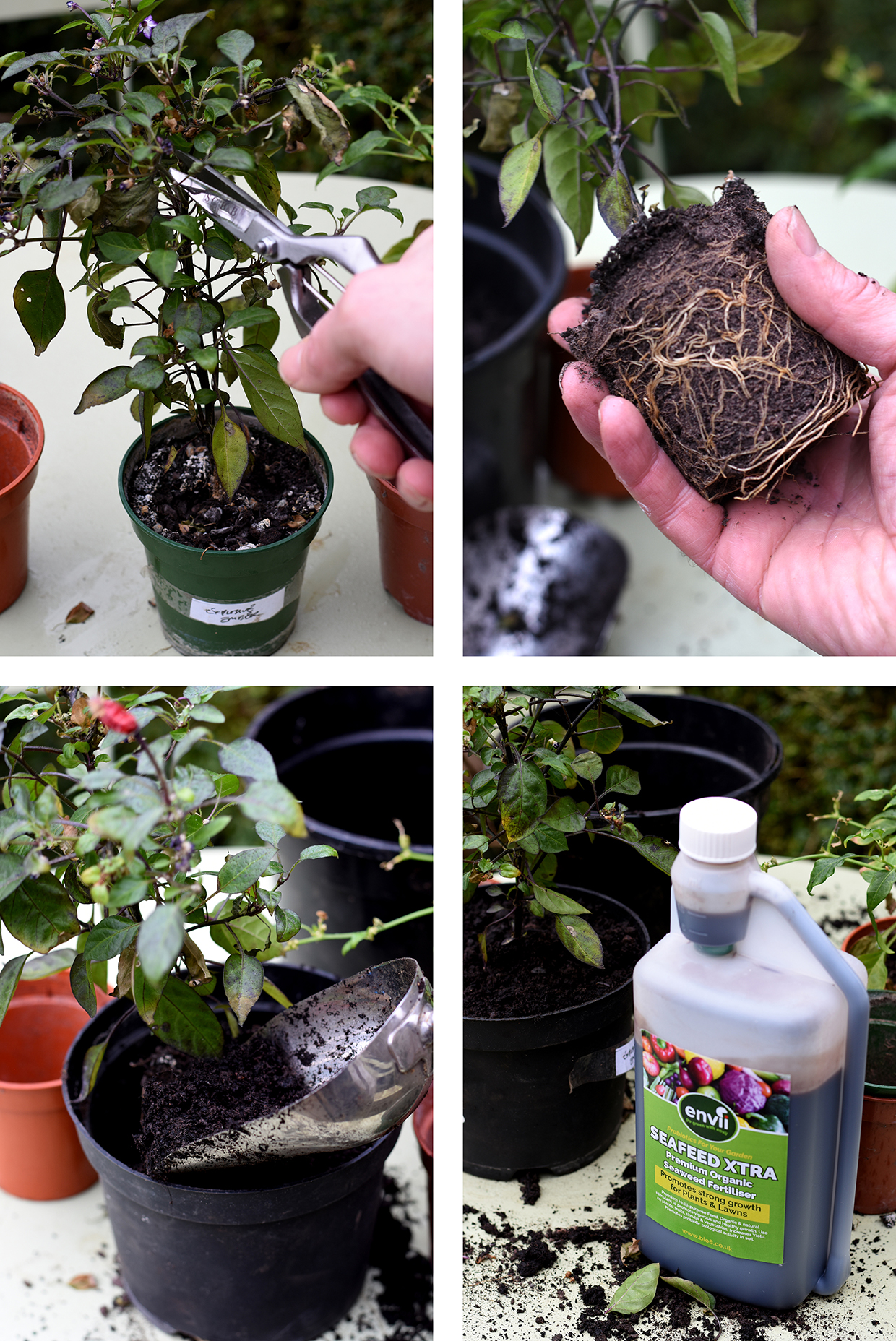Spring has (kind of) sprung and I’m still trying to rouse my tired old chilli plants from their winter slumber. I’ve been ‘overwintering’ last year’s plants (overwintering in this case meaning ‘not throwing them away’) and having no greenhouse or warm poly tunnel in which to tuck them up, they have had to fend for themselves in the less than ideal position of my kitchen windowsill, exposed to drafts, fluctuating temperatures and lack of sunlight. They are in a very sorry state indeed – a picture posted on Twitter of the desiccated stalks of my Basket of Fire plant received shrieks of horror from gardeners and chilli lovers alike. Oh the humanity!
Having to listen to Nick bang on all year about his lovely new greenhouse and his free range chillis that frolic behind steamy windows* was particularly tough. Stuff him, AND his chillis.** There was no such luxury for my plants, who lived like caged birds, perched indoors on their north facing windowsill. They occasionally coughed up a chilli fruit, but output was disappointing.
This year shall be different – I’m going to pamper my plants from the get go and they will love me for it and shower me with flaming scarlet gifts. But before they do, urgent action is required to bring my fiery friends back from the brink.
Here’s my three step recovery guide for knackered old chilli plants.
1 Prune
Dead leaves and damaged stalks blighted my poor plants, so a (severe) haircut was in order. A snip here, snip there. Looking better already! To be honest, this is a job that should be done before tucking them up in bed for the winter, but better late than never. A short back and sides will help divert the plant’s energy away from maintaining manky foliage and back into growing a healthy stem and root system.
2 Re-pot
Tip them out of their (undersized) plant pots and into something larger. Whilst not entirely root-bound, my chillis clearly need re- housing. A good soaking of the plant pot will help release steadfast plants. I’ve repotted mine with a mixture of John Innes no.2 and general purpose compost, which should hopefully do the trick.
3 Feed
My poor plants have been starved of nutrients, so they need a feed. Chilli plants love a seaweed based fertiliser so I’m treating mine to a spot of Envil’s SeaFeed Xtra. This fertiliser has a particularly high seaweed content (5% – others can vary between 1-3%), so I’m hoping for good things. The chaps at Envil recommend giving plants a liberal spraying of SeaFeed every week or so, and that’s what I’ve been doing. Initial signs are good, with shiny green leaves appearing after only a few days of treatment.
It’s now late April, and despite temperatures being a tad on the low side for my delicate indoor peppers, they have started to perk up. Hopefully I have avoided a capsicum catastrophe and my precious plants will live for another season.
There shall be chilli beer. Viva la chilli!
+-+-+-+-+-+-+-+-+-+-+-+-
Reader offer!
Fancy giving the SeaFeed a go? Envil are offering 10% off the total order value.
Go to https://www.bio8.co.uk/p-101/seaweed-fertiliser
and use the following discount code
THIRSTY10
+-+-+-+-+-+-+-+-+-+-+-+-
* “Oooh, I’ve got so many lovely lemon Ajis, they are literally tumbling out of my greenhouse door. I’ve got piles of them. PILES!”
** A simple stuffed chilli recipe. Perfect for Aji Lemons…
- Slice your chillis lengthways, then remove seeds and pith.
- Bring a saucepan of lightly salted water to a boil, add chillis and simmer for 5-10 minutes.
- In a bowl, mix together equal amounts of cream cheese and grated cheddar. Add a dash or two of Worcestershire sauce.
- If you fancy, sprinkle some shredded bacon on top.
- Place on a greased baking sheet and bake at 400° for five minutes.
The post How to revive a chilli plant appeared first on Two Thirsty Gardeners.
from Two Thirsty Gardeners http://twothirstygardeners.co.uk/2017/04/revive-chilli-plant/







